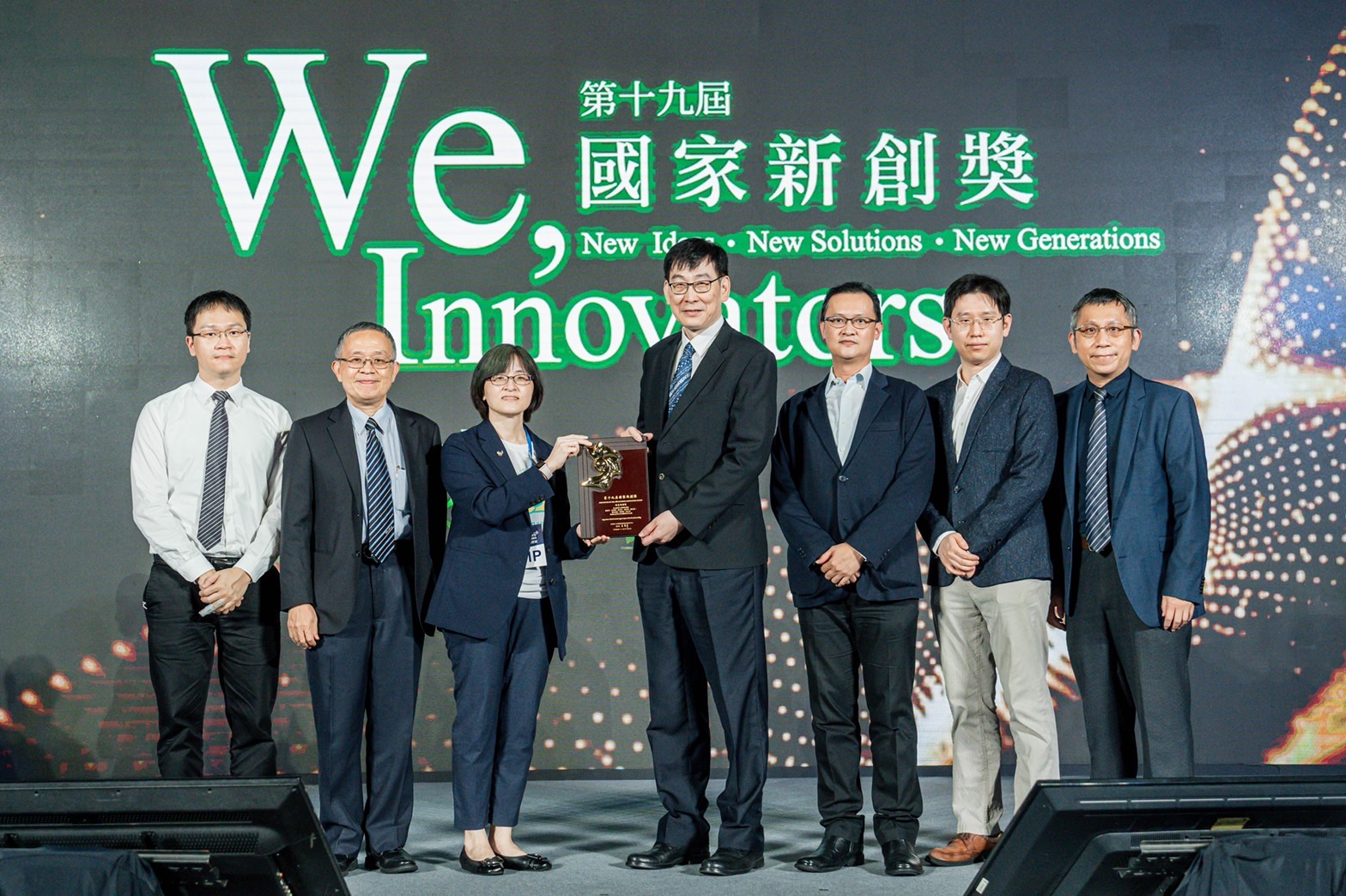Information
我們使用 cookie 分析和其他追蹤技術為您提供更好的用戶體驗。通過繼續使用我們的官網,您確認並同意我們的隱私保護政策。更多關於隱私保護政策,請參考隱私權保護政策。
 Taipei Medical University Hospital
Taipei Medical University HospitalThe 19th National Innovation Award ceremony was held on December 3, 2022, and three teams from Taipei Medical University Hospital (TMUH) won the National Innovation Award: Professor Cheng-Yu Chen's team from the Department of Medical Imaging for "Clinical Decision Support System-Shared Decision Making for Lung Cancer", Dr. Pai-Chien Chou's team from the Department of Pulmonary Medicine for "Tri-Array, Dual-Energy Digital Chest X-Ray in Combination with Cloud-based Analysis and Satellite X-Ray Centers for Lung Problem Assessment", and Dr. Meng-Huang Wu's team from the Spine Surgery Section for "Jungu Stacable Spine Stabilization System".
▓Clinical Innovation Award: Professor Cheng-Yu Chen's team from the Department of Medical Imaging
With the goal of "early prevention, accurate diagnosis, and precise drug use", the “Clinical Decision Support System-Shared Decision Making (CDSS-SDM) for Lung Cancer” is developed based on Computed Tomography (CT) and Whole Slide Pathology Imaging, using TMUH's high-quality clinical data and advanced natural language processing technology in collaboration with Taiwan's leading medical technology company, aetherAI.
The system can help doctors and patients make treatment decisions. It can analyze thousands of large data sets, genetic databases, etc., to predict lung cancer survival and brain metastasis rates, so that patients can receive appropriate drugs to suppress brain metastases as early as possible. It can also recommend the best trial sites for patients based on the results of global clinical trials and advise doctors and patients on diagnosis, medication, and prognosis assessment based on the actual clinical course of the disease, enabling shared decision-making between doctors and patients. This deep learning-based Clinical Decision Support System-Shared Decision Making for Lung Cancer will optimize real-world decisions in the lung cancer clinical pathway and, in turn, help the precision medicine AI industry thrive.
▓Clinical Innovation Award: Dr. Pai-Chien Chou's team from the Department of Pulmonary Medicine
As medical concepts evolve, the medical imaging market is growing rapidly and is seen as an important technological foundation for modern medicine, playing a key role in diagnosis and treatment. In contrast to more expensive computed tomography (CT) scans and their higher radiation doses, radiography provides a simple and quick way to detect potential problems and is widely used for medical and surgical conditions, as well as orthopedic problems. In the case of the chest x-rays, it is widely used to diagnose chest-related conditions such as pneumonia, lung cancer, lung nodules, and fluid in the lungs, as a reference for subsequent treatment.
Conventional radiography superimposes several cross-sectional images into a single flat image. Such image compression can lead to distortion, which can affect the assessment of the lesion. For many years, there have been no major breakthroughs in X-ray imaging technology, and experienced X-ray specialists have been required to help interpret the images, creating problems for clinicians in both interpretation and reporting. In this National Innovation Award project, artificial intelligence-based image processing technology is rapidly evolving to enable advanced analysis of images through expert annotation and deep learning to help identify patient problems.
In order to use X-ray photography with the aid of artificial intelligence to improve diagnosis, we are applying the innovative development of triple-array, dual-energy radiography, which is compatible with existing X-ray equipment and can be fine-tuned for the examination of various disease manifestations. With the patent-pending technology, we can physically calibrate lung structures or nodules with a scale and convert between pixels and actual length to calculate mass size to further assess changes in image area under dynamic analysis and estimate respiratory impairment problems.
For this project, we will set up satellite X-ray centers that will integrate with neighboring clinics and upload images to a cloud-based platform to provide clinicians with real-time interpretation and improve the diagnosis of disease in clinics. By continuously recording and comparing changes in images, the most effective value-added medical technology in the hierarchy of medical care can be established at a reduced cost. We will continue to use deep learning to improve AI interpretation results and innovate medical X-ray diagnostic applications.
▓Clinical Innovation Award: Dr. Meng-Huang Wu's team from the Spine Surgery Section
The "Jungu Stacable Spine Stabilization System“ is a protective device to prevent adjacent segment disease of the spine. The clinically supported ligature technology and the team's original product design allow for quick and easy surgical implantation in a minimally invasive manner. This will address the problem of rapid post-operative degeneration of adjacent segments in patients undergoing spinal fusion surgery, avoiding the need for secondary surgery and solving the problem that existing products are not effective in reducing the incidence of adjacent segment disease, creating new risks and requiring open surgery.
The team's mission is to develop medical solutions for minimally invasive surgery from both the clinician's and patient's perspectives and to help patients receive better medical care through the development, commercialization, and certification of innovative medical materials.